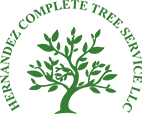When most people think of invasive species, they likely picture insects or animals that harm the environment. However, trees can also be invasive when they are not native to an area. In addition, they may take over and displacing indigenous plants.
If you live in Maryland, it is essential to know some common invasive trees throughout the state. This guide will help you avoid planting them in your yard or garden.
Do you currently have problems with invasive tree species? If so, you could benefit from top-notch tree service by Hernandez Complete Tree Service in Alexandria, VA.
Weeping Willow
Native to China, the Weeping Willow is a spectacular tree for its unique, weary appearance. Thanks to its love for moisture, it commonly thrives along the water’s edge in parks and large landscapes.
This tree species can give your yard a beautiful aura. However, it is not a great choice for residential landscapes due to its invasive root system. The shallow roots grow aggressively toward water sources and can spread up to three times the tree’s length.
The roots usually lie close to the ground surface, leading to bumps in the lawn. As a result, they can make mowing difficult. They can also lift concrete patios and damage underground water, plumbing, and sewer lines.
Another downside of the Weeping Willow is that it drops significant amounts of branches and twigs all year long. Furthermore, it attracts blank canker disease and gypsy moths.
Sycamore
Sycamore is another popular tree species in Maryland. While it is a shady tree, it can cause major problems due to its invasive nature. Since Sycamore trees grow quickly, their fast-reaching branches and roots can damage buildings, underground pipes, and pavement.
This tree species also sheds its bark frequently. While the seed pods hanging from its branches may look visually appealing, they can impede yard cleaning during the fall. Sycamore is also vulnerable to Anthracnose, which can easily kill the American Sycamore and damage other Sycamore varieties.
Silver Maple
The silver maple tree is an attractive, tall, fast-growing shade tree native to eastern North America. It thrives in open sunlight along waterways and creeks. However, it is one of the most invasive species of trees in Maryland.
This tree species is susceptible to various diseases and fungi. If you do not rake the leaves frequently during the fall and leave them on your lawn, the leaves will rot. In turn, the rotting leaves form the fungus Anthracnose.
Planting silver maple trees strategically is critical due to their extensive root system. You should plant them away from foundations, driveways, sidewalks, and plumbing lines.
Eastern Cottonwood
Eastern cottonwood, or Poplar, is a large, fast-growing tree that thrives along streams, rivers, and lowland areas. It is one of the most invasive native trees in Maryland. Its roots are notorious for invading sewer systems.
It’s essential to keep this tree’s roots from becoming a problem. Deep watering and strategic placement away from septic systems, sewer lines, and pavement are key preventative steps. This deciduous tree also sheds leaves and twigs in the fall months, causing a mess on your property.
Final Thoughts
An exotic or non-native plant can damage natural resources and even harm human health if it becomes invasive. Fortunately, you now know the most invasive species of trees in Maryland. Now that you can recognize them, call a professional tree removal service if you see them in your yard.
Call Hernandez Complete Tree Service at (240) 299-4639 to request a free estimate and know more summer tree care tips.


